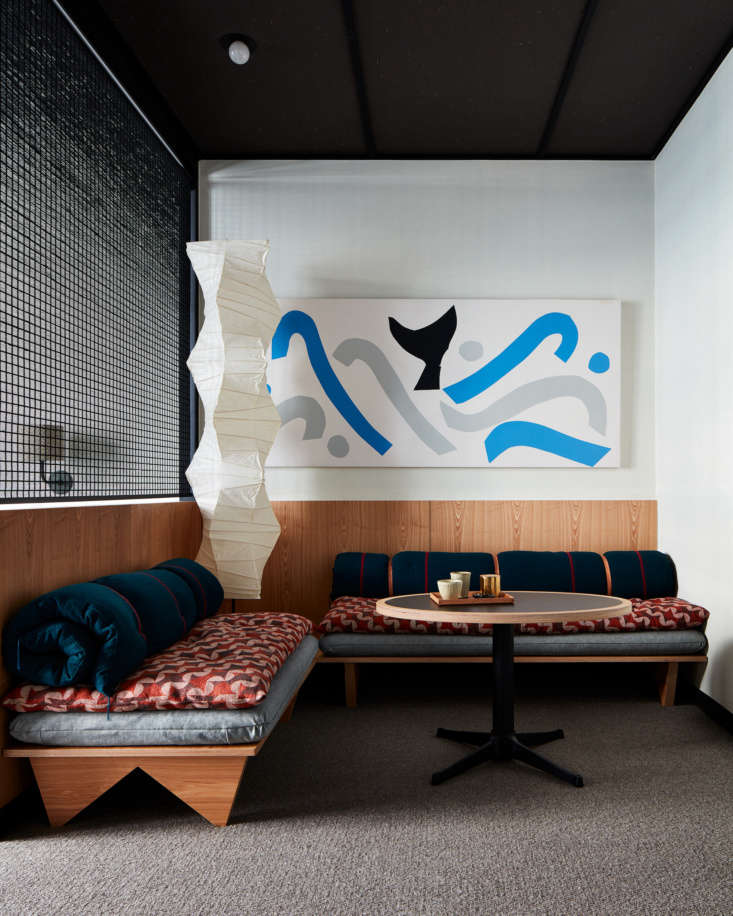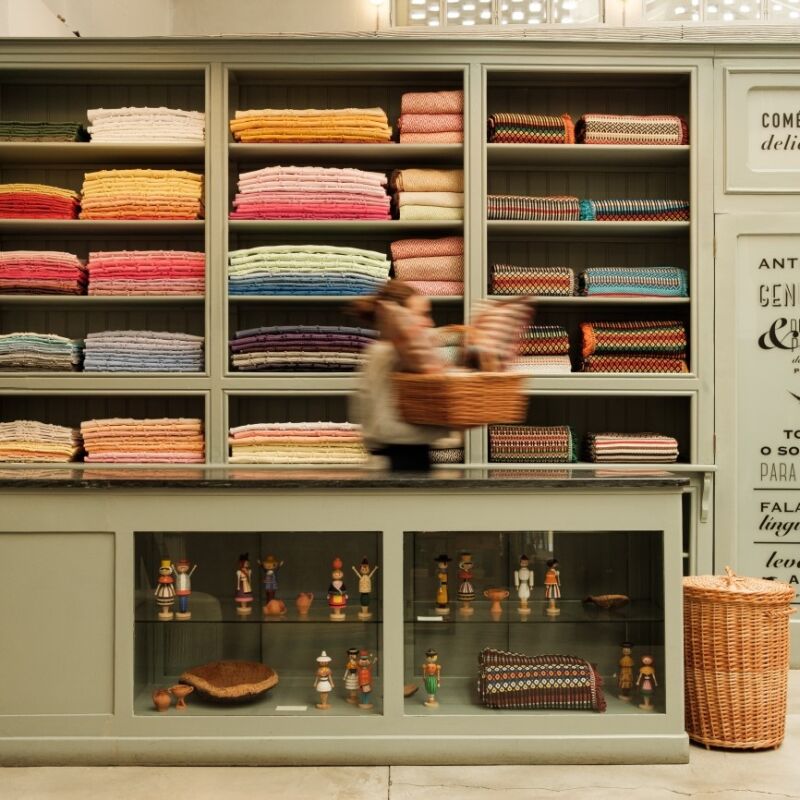We have yet to meet a Commune-designed Ace Hotel that we didn’t like. Their latest collaboration has yielded one of our favorite projects yet: Ace Hotel Kyoto, the hipster hospitality chain’s first ever outpost in Asia.
The architect behind the 213-room hotel is Kengo Kuma, who designed the 2020 Tokyo Olympic Stadium. Part new build, part historic structure, it features multiple courtyards and gardens and a distinctly Japanese facade that references the traditional wooden houses (machiya) of Kyoto.
Inside, LA-based Commune Design has interpreted Japanese traditions, by way of West Coast bohemia. Beautiful Japanese textiles are used to cover casual daybeds; a record player in each room is at the ready for sampling retro tunes (we spy a Grace Jones album in one of the rooms); wood built-ins and white walls make for a naturalistic palette.
The hotel opened last spring (high-season rates start at $400). Ready to admire the East-meets-West results? The folks behind Atelier Ace and Commune Design walk us through the finer points.
Photography by Stephen Kent Johnson, courtesy of Ace Hotel Kyoto.








For more Japanese inspiration, see:
- Japanese Laundry: Small-Space Solutions (Many via Amazon) from a Spotless Country
- 20 Best Online Shops for Japanese Housewares Design
- Kitchen of the Week: A Custom Culinary Workspace by a Japanese Atelier
N.B.: This post is an update; the original story ran on March 4, 2020.




Have a Question or Comment About This Post?
Join the conversation (4)